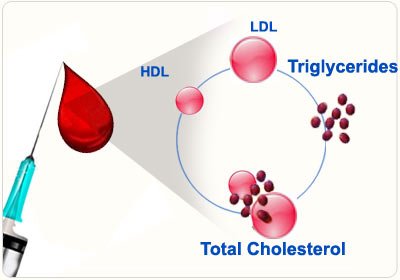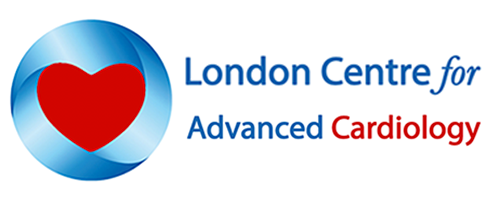 Having high cholesterol can increase your risk of heart and circulatory diseases such as heart attack, stroke and vascular dementia.
Having high cholesterol can increase your risk of heart and circulatory diseases such as heart attack, stroke and vascular dementia.
What is cholesterol?
Cholesterol is a fatty substance found in your blood. It’s produced naturally in the liver. Everyone has cholesterol. We need it to stay healthy because every cell in our body uses it. Some of this cholesterol comes from the food we eat.
What is high cholesterol?
High cholesterol is when you have too much cholesterol in your blood. This can increase your risk of heart and circulatory diseases such as heart attack and stroke.
What are the types of cholesterol?
There are two main types of cholesterol, one good and the other bad. Having too much ‘bad’ cholesterol can cause problems with your health. Cholesterol is carried in your blood by proteins. When cholesterol and proteins combine, they’re called lipoproteins.
High-density lipoproteins or HDL is called ‘good’ cholesterol. This is because it gets rid of the ‘bad’ cholesterol from your blood. It takes cholesterol that you don’t need back to the liver. The liver breaks it down so it can be passed out of your body.
Non-high-density lipoproteins or non-HDL is called ‘bad’ cholesterol. This is because when there is too much of it, it can build up inside the walls of the blood vessels. This clogs them up causing narrowing of the arteries which increases your risk of having a heart attack or stroke.
You may have also heard ‘bad’ cholesterol being called ‘LDL’ cholesterol. This was previously used as the main measure of bad cholesterol but we now know that other forms of non-HDL cholesterol are also harmful.
Triglycerides
Our blood also contains a type of fat called triglycerides. This is stored in the body’s fat cells. Being very overweight, eating a lot of fatty and sugary foods or drinking too much alcohol can make you more likely to have a high triglyceride level. Triglycerides can also contribute to the narrowing of the artery walls, increasing your risk. You may see it on your cholesterol reading results, and your doctor will be able to tell you if it’s too high.
You can have a normal level of HDL and non-HDL cholesterol but still have a high triglyceride level.
Why is high cholesterol bad for you?
Non-HDL take cholesterol from the liver to the cells around your body. Too much bad cholesterol (non-HDL) can be harmful because it sticks to the inside walls of your arteries. This can lead to fatty material (atheroma) building up – this process is known as atherosclerosis. It makes it harder for blood to flow through, which can lead to a heart attack or a stroke.
If your total cholesterol is high, it can mean that you have a lot of bad (non-HDL) cholesterol in your blood. A high level of good (HDL) cholesterol can help keep that bad cholesterol in check and remove it from your body.
What causes high cholesterol?
Anyone can get high cholesterol, and it can be caused by many different things. Some things you can control like lifestyle habits, others you can’t. As long as you take care of the things you can control, you’ll help lower your risk.
Things that cause high cholesterol you can control:
- eating too much saturated fat
- not being active enough
- having too much body fat, especially around your middle.
Smoking can lead to high cholesterol levels, and the build-up of tar it causes in your arteries makes it easier for cholesterol to stick to your artery walls.
If you are overweight or have diabetes, you are at greater risk of having high cholesterol.
Things that cause high cholesterol you can’t control:
- getting older
- if you are male or female
- ethnic background
- Familial Hypercholesterolaemia (FH), a form of high cholesterol you are born with
- kidney or liver disease
- an underactive thyroid gland
Signs and symptoms of high cholesterol
There aren’t usually any typical signs you have high cholesterol which is why it’s so important to get it checked out. It’s a hidden risk factor which means it happens without us knowing until it’s too late.
How is cholesterol measured?
Blood cholesterol levels are measured using a simple blood test. Your GP or practice nurse will take a blood sample, usually by pricking your finger or you might be asked to go for a blood test at your local hospital.
Your blood is then checked for levels of good (HDL) cholesterol, bad (non-HDL) cholesterol and triglycerides, as well as getting a total cholesterol result.
Cholesterol and triglycerides are measured in units called millimoles per litre of blood, usually shortened to ‘mmol/Litre’ or ‘mmol/L’. Generally speaking, for a healthy heart the aim is to have a low non-HDL level and a higher HDL level.
If you have been told you have a high cholesterol level, you have too much ‘bad’ cholesterol in your bloodstream which increases your risk of having a heart attack or stroke. But a high level of ‘good’ (HDL) cholesterol can help keep that ‘bad’ (non-HDL) cholesterol in check.
What is a healthy or normal cholesterol level?
There is no specific target cholesterol level because your doctor is looking at your overall risk of developing heart and circulatory diseases. Your risk is increased if you have high cholesterol as well as other risk factors, such as:
- smoking
- high blood pressure
- being physically inactive
- being overweight
- having diabetes
- family history of premature coronary heart disease (before 55 for men and before 65 for women)
- being of South Asian origin
The more risk factors you have, the higher your risk of developing a heart or circulatory disease such as a heart attack, stroke or vascular dementia.
How can I lower my cholesterol levels?
- Eat a healthy balanced diet, low in saturated fat
- Get active
- Quit smoking
Find out more about living a healthy lifestyle and simple swaps you can make to help reduce your cholesterol.
Source: British Heart Foundation
